Name Meret Oppenheim | Role Artist Period Surrealism | |
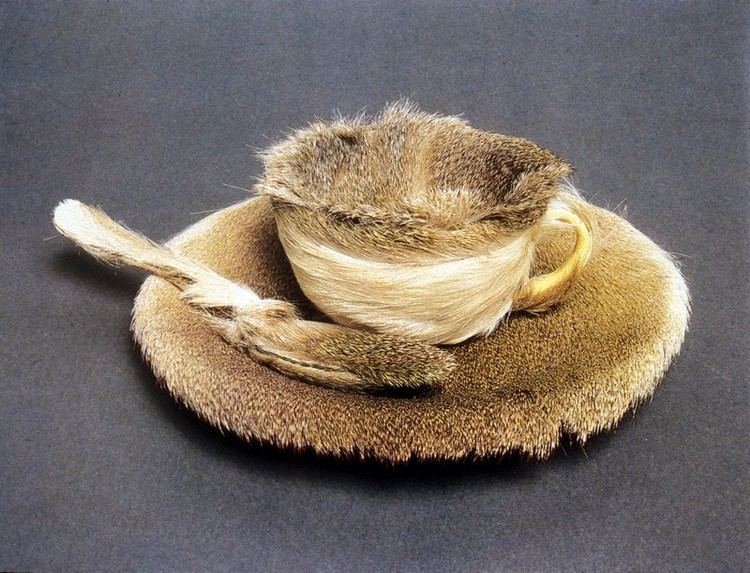 | ||
Full Name Meret Elisabeth Oppenheim Notable work Object: Breakfast in Fur (1936)My Nurse (1936)Giacometti\'s Ear (1933) Education Academie de la Grande Chaumiere | ||
Meret oppenheim retrospektive martin gropius bau berlin
Méret Elisabeth Oppenheim (6 October 1913 – 15 November 1985) was a German-born Swiss Surrealist artist and photographer. Oppenheim was a member of the Surrealist movement of the 1920s along with André Breton, Luis Buñuel, Max Ernst, and other writers and visual artists. Besides creating art objects, Oppenheim also famously appeared as a model for photographs by Man Ray, most notably a series of nude shots of her interacting with a printing press.
Contents
- Meret oppenheim retrospektive martin gropius bau berlin
- Swiss surrealist Meret Oppenheim
- Early life
- Career
- List of Works
- Exhibitions
- Recognition
- Legacy
- References
Swiss surrealist Meret Oppenheim
Early life
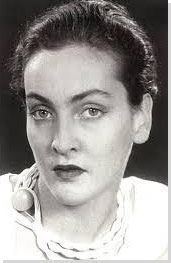
Méret Oppenheim was born on 6 October 1913 in Berlin. Oppenheim is named after Meretlein, a wild child who lives in the woods, from the novel Green Henry by Gottfried Keller. Oppenheim had two siblings, a sister named Kristin (born 1915) and a brother named Burkhard (born 1919). Her father, a German-Jewish doctor, was conscripted into the army at the outbreak of war in 1914. Consequently, Oppenheim and her mother, who was Swiss, moved to live with Oppenheim's maternal grandparents in Delémont, Switzerland. In Switzerland, Oppenheim was exposed to art and artists from a young age. Oppenheim was inspired by her aunt, Ruth Wenger, especially by Wenger's devotion to art and her modern lifestyle.
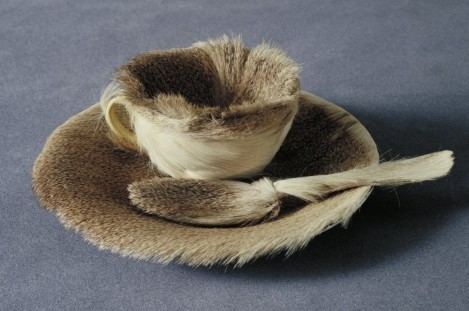
Oppenheim discovered the writings of Carl Jung, a friend of her father's, and was inspired to record her dreams in 1928. Her dreams would serve as important sources for much of her art throughout her life. The work of Paul Klee, the focus of a retrospective at the Kunshalle Basel in 1929, provided another strong influence on Oppenheim, arousing her to the possibilities of abstraction.
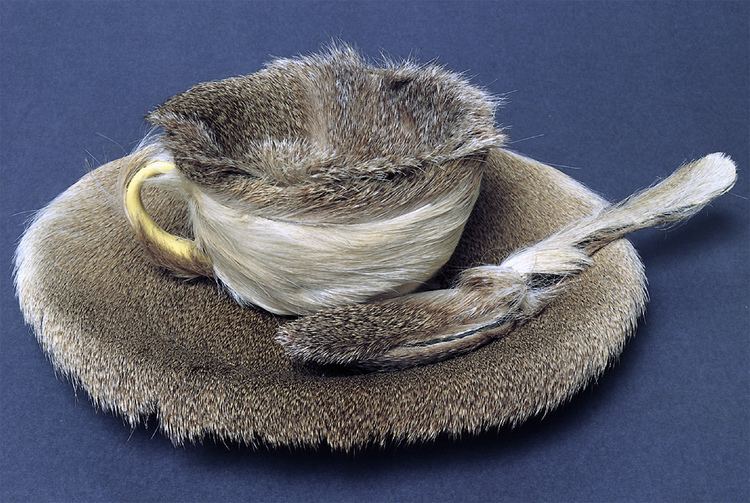
In 1932, at the age of 18, Oppenheim moved to Paris and sporadically attended the Académie de la Grande Chaumière. In 1933 she met Hans Arp and Alberto Giacometti who, after visiting her studio and seeing her work, invited her to participate in the Surrealist exhibition in the “Salon des Surindépendants,” held in Paris between 27 October and 26 November. Oppenheim met André Breton and began to participate in meetings at the Café de la Place Blanche with the Surrealist circle. The conceptual approach favored by Marchel Duchamp, Max Ernst, and Francis Picabia became important to her work.
Career
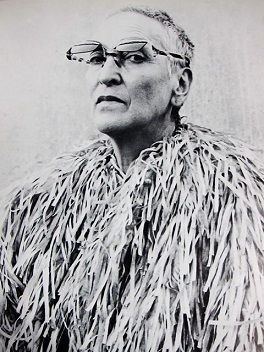
In 1936, Oppenheim had her first solo exhibition in Basel, Switzerland, at the Galerie Schulthess. She continued to contribute to Surrealist exhibitions until 1960. Many of her pieces consisted of everyday objects arranged as such that they allude to female sexuality and feminine exploitation by the opposite sex. Oppenheim’s paintings focused on the same themes. Her originality and audacity established her as a leading figure in the Surrealist movement.

Méret Oppenheim's first one-woman exhibition in the Galerie Sohulthess, Basel (1936) featured surrealist objects that Oppenheim had created. In 1937, Oppenheim returned to Basel and this marked the start of her artistic block. She struggled after she met success, and worried about her development as an artist. Méret Oppenheim usually worked in spontaneous bursts and at times destroyed her work. Oppenheim took a hiatus from her artistic career in 1939 after an exhibition at the Galerie René Drouin started by Rene Drouin in Paris. In the exhibition she was featured alongside many artists which included Leonor Fini and Max Ernst. She did not share any art with the public again until the 1950s. She then reverted to her "original style" and based her new artworks on old sketches and earlier works and creations.
Méret Oppenheim's best known piece is Object (Le Déjeuner en fourrure) [Object (Breakfast in Fur)](1936). The sculpture consists of a teacup, saucer and spoon that the artist covered with fur from a Chinese gazelle. It was purchased by Alfred Barr for the collection of the Museum of Modern Art in New York and included the museum's first surrealist exhibition Fantastic Art: Dada and Surrealism in 1936. The enormous success of this early work would create later problems for Oppenheim as an artist, and soon after its creation she drifted away from the Surrealists. Decades later, in 1972, she artistically commented on its dominance of her career by producing a number of "souvenirs" of Le Déjeuner en fourrure.
In 1937 Oppenheim returned to Basel, training as an art conservator in order to ensure her financial stability. This marked the beginning of a creative crisis that lasted until 1954. Although she maintained some contact with her friends in Paris, she created very little, destroying, or failing to finish much of what she created.
In 1956 Oppenheim designed the costumes and masks for Daniel Spoerri’s production of Picasso’s play Le Désir attrapé par la queue in Berne. She and artist Lilly Keller are cast as the curtains. In 1959 she organized a Spring Banquet (Le Festin) in Bern for a few friends at which food was served on the body of a naked woman. With Oppenheim's permission, Andre Breton restaged the performance at the opening of the Exposition inteRnatiOnale du Surrealisme (EROS), at the Galerie Cordier in Paris later the same year. Outside its original intimate setting, the performance was overly provocative and Oppenheim felt her original intention for the work was lost.
In the 1960s, Oppenheim's home base of Bern became much more important as an art center. She continued to live and work there, as well as at a second home in Carona, Italy (1968), and maintained a studio in Paris starting in 1972. She was an important figure in feminist debates in the early 1970s, although she refused to identify as a feminist.
In 1983 Oppenheim designed The Spiral Column (Spiralsaule) unofficially known as "Meret Oppenheim Fountain" on the Waisenhausplatz in Bern. A tall concrete column wrapped with a garland of grass over a small watercourse, the fountain provoked a petition for its removal. In 1985 City of Paris commissioned Spiral (Nature's Way) [Spirale (Gang de Natur) from Oppenheim for the Jardins de l'ancienne Ecole polytechnique on the Montagne Ste. Genevieve near the Pantheon. The work was based on a 1971 model and finished posthumously a few months after Oppenheim's death in 1986.
List of Works
Exhibitions
In 1936, at the beginning of her career, Oppenheim was included in two important Surrealist exhibitions outside of Paris: The International Surrealist Exhibition, New Burlington Galleries, London and Fantastic Art Dada Surrealism, The Museum of Modern Art, New York.
Oppenheim's first retrospective was hosted by Moderna Museet Stockholm in 1967. In Switzerland, her first retrospective was held at Museum der Stadt, Solothurn (1974) and traveled to Kunstmuseum Winterthur and Wilhelm-Lehmbruck Museum, Duisberg, Germany in 1975.
In 1996, the Solomon R. Guggenheim Museum mounted Oppenheim's first major museum show in the United States at a time when renewed interest in her work, particularly among young artists, had already begun in Europe. In 2013, a comprehensive retrospective of Oppenheim's work opened at the Martin-Gropius-Bau in Berlin, gathering the artist’s paintings, sketches, sculptures, masks, clothing, furniture, and jewelry. Lenders included singer David Bowie, the Swiss retail tycoon and art dealer Ursula Hauser, and the Dutch diamond magnate Sylvio Perlstein.
Recognition
Oppenheim's international awards include the 1982 Berliner Kunstpreis. In her acceptance speech upon receiving the Art Award of the City of Basel on January 16, 1975, Oppenheim coined the phrase "Freedom is not given to you — you have to take it."
Legacy
Oppenheim, who died in 1985, at 72, kept careful notes about which patrons and colleagues she liked and where her works ended up. She dictated which of her writings should be published and when, and there are puzzling gaps, since she destroyed some material. The archive and much artwork have been entrusted to institutions in Bern, including the Museum of Fine Arts and the National Library.
Levy Galerie, founded in 1970 by Hamburg resident Thomas Levy, represents the estate of Meret Oppenheim, in close collaboration with the artist's family.
